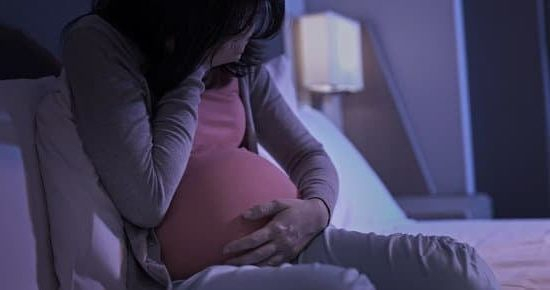Introduction
Lower right side pain during pregnancy can be a normal, healthy symptom of the changes that your body experiences during this time. It is important that expecting mothers keep close watch on any pains or aches they experience and to consult with their doctor if it becomes excessive or concerning.
The cause of lower right side pain in pregnancy generally stems from hormonal changes and pressure on the muscles and ligaments in the abdomen. This can be particularly true later on in a pregnancy as the baby continues to grow and push against internal organs, or when someone has an underlying condition such as endometriosis.
To ease symptoms of lower right side pain, simple things like taking warm baths or applying heat pads may be helpful to relax tense muscles. Getting enough rest is also important for both physical and mental wellbeing for expecting mothers which can help reduce strain on the body allowing for more comfort. Additionally drinking plenty of fluids, including water, juice and herbal tea may assist in relieving cramps associated with lower right side pain during pregnancy. Doing light exercise such as walking can also help ease discomfort and strengthen muscles.
While lower right side pain during pregnancy is normal, it is still vital that expecting mothers consult with their doctor about any concerning symptoms to gain accurate advice that’s tailored specifically to them and their situation.
What Causes Lower Right Side Pain During Pregnancy?
Structural Causes:
– Hernia: A hernia is a condition where abdominal contents poke through an area of weak muscles. This can cause discomfort and pain in the lower right side of the abdomen during pregnancy.
– Ovarian Cyst: An ovarian cyst is a sac filled with fluid that develops on or within the ovary. It can cause severe pain in the lower right abdomen and may require medical intervention.
– Gallstones: Though rare, gallstones are a possible cause of recurrent lower right-sided abdominal pain during pregnancy. If left untreated, they could increase the risk of developing pancreatitis or jaundice.
Musculoskeletal Causes:
– Muscle Strain/Tension: Pregnancy hormones can lead to laxity in the ligaments around the pelvis, which increases the chance for injury or muscle strain that can result in lower abdominal pain on either side, but most often on one side.
Gastrointestinal Issues:
– Constipation/Gas Pain: Pregnancy hormones can slow down digestion, leading to constipation and gas build up which can distribute pressure to either side of the abdomen, resulting in sharp pains that occur mainly on one side.
Symptoms and Effects of Lower Right Side Pain
Lower right side pain often affects pregnant women at different stages of their pregnancy, as the body is not used to having so much weight, which can cause problems for your spine and lower back. Depending on the stage of pregnancy you are in, this type of pain can be caused by several different things, including a compressed nerve, sciatica, ligament pain or muscle spasms. The most common symptoms associated with lower right side pain are:
• Dull ache – This causes a continuous dull throbbing sensation, usually radiating from the lower back into your legs or upper buttocks/hips region.
• Stabbing sensations – This occurs when sudden sharp jabs happen around your lower abdominal area and may also radiate down one leg. Some women experience sharp knife-like pains during certain movements such as coughing.
• Muscle Spasms – During certain movements or positions the muscles located near your pelvis will become tense and cause an uncomfortable muscle contraction feeling which can be quite painful.
• Tingling Sensations – Some women experience numbness or tingling sensations that travel from their lower back down either one leg into the foot. This feeling is often accompanied by weak feelings in your calf muscles and feet.
When to See a Doctor for Lower Right Side Pain
It is important to see a doctor if you are experiencing lower right side pain during pregnancy, as this could be indicative of more serious underlying issues. Certain warning signs could indicate the need for medical care including: severe or worsening pain that does not lessen when changing positions, redness or warmth in the area, difficulty sleeping due to the pain and a fever accompanying the pain. Other symptoms such as dizziness, nausea or vomiting should also be assessed by your healthcare professional. Additionally, if the pain has lasted longer than a few hours and is not improving, it is advised to seek medical advice.
Treatment for Lower Right Side Pain
Lower right side pain during pregnancy can be managed with self-care measures. Resting is important to provide relief from the pain. If the pain is severe, it may be helpful to apply a cold compress, such as an ice pack or frozen peas wrapped in a flannel cloth, to the affected area for 20 minutes at a time. Heat should not generally be used during pregnancy.
Regular exercise is also important to ensure that abdominal muscles are strong and can provide support during and after pregnancy. Low-impact exercises such as walking, yoga and swimming can help strengthen the core and support core muscles which can reduce pain when walking or standing. Supporting your belly while sitting and using pillows against your thighs while sleeping may also help alleviate lower right side pain during pregnancy.
If the pain persists, it is important to talk to a doctor about more tailored treatment options such as physiotherapy or medications (if appropriate). Your doctor may also advise further tests if your symptoms suggest that you have complications associated with your pregnancy.
Prevention of Lower Right Side Pain During Pregnancy
One of the best ways to prevent lower right side pain during pregnancy is to ensure that you have a proper diet and exercise regimen. Eating a balanced diet that is full of fruits, vegetables, lean proteins, complex carbohydrates and healthy fats will provide the important nutrients needed for a healthy pregnancy. Additionally, engaging in moderate physical activity such as walking, swimming or yoga can help to keep your muscles toned and increase circulation which can reduce the risk of cramping and other pains in the lower abdominal area.
Ensuring adequate hydration throughout the day is also important for preventing lower right side pain during pregnancy. dehydration can lead to muscle cramps which are a frequent cause of this type of discomfort. Additionally, drinking plenty of fluids helps to flush out toxins from your body, reduces joint pain and swelling associated with pregnancy hormones and helps to regulate temperature during hot days.
It’s also important to try and get plenty of rest throughout your pregnancy by creating a relaxing environment, sleeping with support and wearing comfortable clothing while sleeping. Proper positioning while sleeping will help ensure an uninterrupted night’s sleep and reduce episodes of nighttime backaches or right-sided abdominal pain due to poor posture when sleeping.
Finally, trying stress management techniques such as yoga or getting massage therapy can be beneficial for reducing levels of stress that may aggravate existing aches or pains in the lower abdomen. Other methods such as meditation or deep breathing exercises are likewise great ways to manage stress levels which in turn can help minimize overall discomfort experienced while pregnant.
Summary
Lower right side pain during pregnancy can be a sign of a range of conditions, most of which are perfectly normal and harmless. It is important to identify the cause of the pain in order to take the necessary steps to address it. Possible causes of lower right side pain during pregnancy include round ligament pain, appendicitis, cramping associated with implantation, and gas or bloating from indigestion. If you experience any extreme levels of abdominal discomfort accompanied by fever, vomiting, or excessive bleeding, contact your doctor immediately for further care.

Welcome to my fertility blog. This is a space where I will be sharing my experiences as I navigate through the world of fertility treatments, as well as provide information and resources about fertility and pregnancy.





